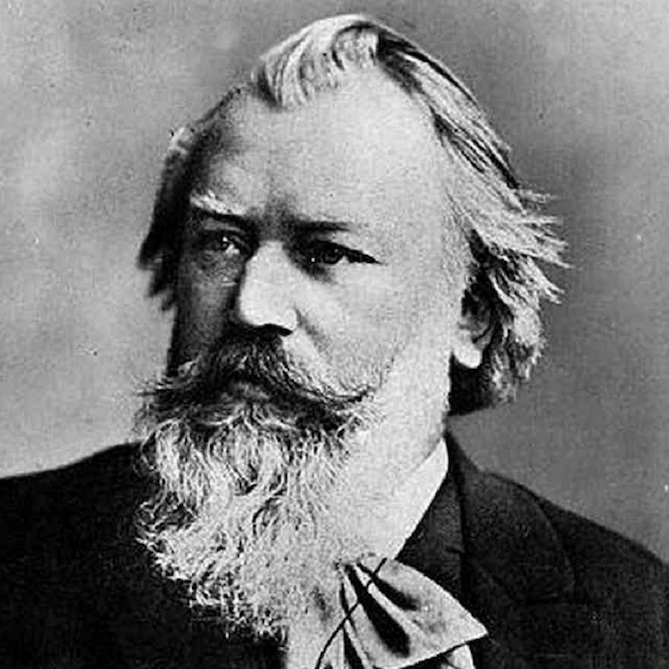
Playing Audition Excerpts: Yes, the Devil’s in Them
Brant Taylor
Although the collection of excerpts on an audition repertoire list may seem arbitrary, each one has a purpose: giving the audition candidate an opportunity to demonstrate certain things about his or her playing and artistry. Audition success involves showing a command of certain basic elements—such as rhythm, dynamics, intonation and articulations—as well as conveying a nuanced understanding of the music and the composer. A well crafted audition list will include excerpts that emphasize each of these elements, and a candidate’s ability to demonstrate control and understanding of them will determine his or her chance for success.
Let’s put these goals into concrete terms using a common cello audition excerpt as an illustration—the opening of the second movement of Brahms’ Symphony No. 2:
The bar-by-bar discussion that follows is by no means intended to imply that these are the only ways to think about this music. Rather, it is to illustrate one type and level of thinking that can lead to a successful audition performance. Ultimately, each of us should form our own ideas through exploration, with small details being carefully considered and then absorbed into the larger picture. Some of the comments below have to do with making what is printed on the page clearly audible to the listener, which sometimes is no small task. Other comments involve thinking beyond what is printed.
Some preliminary statements about this excerpt:
What are the top priorities here? Beautiful and nuanced sound, seamless legato, and elegant phrasing.
If you aim for the right sonic and musical qualities first, the best tempo will usually find itself. Resist choosing a tempo first and then fitting the music into it. Remember that the slower the tempo gets, the more difficult it will become to play long phrases successfully.
Printed dynamics, phrasings, and other markings should be very clear to the listener, but subtly inflecting a phrase even when no dynamic is printed is not only smart for an audition, it’s good musicianship.
Although this discussion does not specifically address vibrato, it should be understood that the desirable vibrato is one that (a) doesn’t stop during finger changes and shifts and (b) can be varied to enhance your musical aims. Moments of poco (or even senza) vibrato could conceivably be used effectively in this excerpt, but these decisions must be made thoughtfully and the sounds prepared carefully. Nothing in this excerpt happens suddenly.
Bars 1 – 2
Your sound must be free and open. Make an appropriate preparatory motion to begin playing so you aren’t starting from a physically static place.
Don’t push the limits of the instrument here—for that matter, don’t ever do it. This is not the loudest you will play in this excerpt. What does poco forte mean? Define it in relation to the louder dynamics that will come later.
Should you divide the opening slurs into more than one bow stroke? The answer (both here and everywhere) depends on whether you can make a beautiful, free sound in the right dynamic without dividing the slur. If you do break the slur, do so as imperceptibly as possible. Should you start up bow or down bow? Either can work, and aurally it should make absolutely no difference.
This phrase has contour, so it must have inflection. Many players phrase away at the end of the first slur, which is nice, but then begin the second slur louder and do exactly the same thing again—even though the ending harmony is completely different the second time. How about beginning the second slur where the first leaves off and then warming into the end of the second slur, to coincide with the first B major chord of the movement?
Bar 3
The last beat of bar 2 must sound like a pickup (even though you must use the bow more quickly), so its relationship to the following downbeat is clear.
The exact bowing in this bar is less important than that you play the phrase, not your chosen bowing. Coupling two notes together is common. This is a good bowing if well executed, but your ears must demand that each note goes in its proper place in the phrase, with no unwanted accents or inconsistent articulations. The musical line goes down from the downbeat, so it is nice to phrase it down.
Bar 4
It is imperative to avoid unwanted emphases on beats 2 and 3. Playing very smoothly here ensures that you don’t upstage the swell in the next bar (which should be noticeably different from anything played so far).
Bar 5
There is a lot to think about in this bar. Many bowings can work. Make the swell gradual, and not to the B, which frequently gets jabbed either because it’s the highest note or because of inelegant bow use.
Give careful thought to the type of audible connection—if any—that you want between the D# and the B. Then choose your fingering based on that. Too often, a player will go with the first fingering that works and become stuck with whatever type of slide results from it.
The most sudden dynamic and color change in the entire excerpt happens in this bar. Where? On the E. I have heard many an audition candidate sit on the E with unchanging tone, then suddenly play softer on the C#. The E is the gateway from one world of sound (and the height of the swell) to another. It must begin to change right away and lead us to a completely different sound color.
Bars 6 – 7
Show beautiful soft sound and real legato. Using the A string in bar 7 is fine if it’s done in a way that doesn’t accentuate the A string’s brightness.
You must shift at some point, but downward “shmears” are seldom attractive musically. Every shift you make should be either expressive or inaudible. In these bars, go for inaudible, meaning artful use of the bow to play legato while still making allowances so shifts aren’t heard.
Bars 8 – 9
The two upward shifts take place as a part of the longest single crescendo in the excerpt, not to mention that they end on different notes. Give the feeling, as a singer would, that the second one reaches higher, taking a little more musical “effort.” As mentioned, choose your fingering carefully. Which type of shift you make (and whether you shift at all, since crossing from the D string is an option) has an enormous effect on whether you sound like you are transcending the instrument or not.
Where is the top of the crescendo? Brahms is a bit vague with his markings, but it seems to want go to the downbeat of bar 10. If you aren’t careful, the B in bar 9 gets suddenly louder, so it sounds like the phrase goal and leaves no room to continue to bar 10. Pacing this crescendo evenly for two full bars is difficult—but it’s what the composer wrote.
Bars 10 – 11
The downbeat of bar 10 may be the loudest you play in this excerpt. Thinking backward, your sound at the opening must be gauged so that it doesn’t compete with the sound you’ll use at bar 10. After such a long crescendo, the diminuendo is quite quick. How low does it go? That’s up to you, based on the surrounding musical events. Bar 11 begins with the same two notes as bar 10, but the swell is much quicker—so perhaps it doesn’t come up as high. The small swells in these bars must be interpreted in the context of the larger phrase, and all swells do not have to be created equal—even those that look the same on paper.
Bars 12 – 13
Let the sound grow freely through beat 2 of bar 12. This is not a moment for white-hot intensity—nothing in this excerpt is. Since the cellos stop being the primary voice at the “poco forte” marking in the middle of the bar, it is less than you have just been playing. Crashing down on the F# does not give the impression that you understand the changing role of the cello line in the music.
Bar 14
The fast notes must be heard, but they must also be smooth and not seem suddenly active so they disrupt the general sense of broadness in the music. Get started on time so you can spread the quickest notes out to their full value.
There are many possible fingerings for this passage. The most obvious fingerings all involve shifting during the fast notes. I looked for an alternative and ultimately chose a solution for myself that is a little outside-the-box: from the downbeat, 2 1 2 4 4 (on the G natural). This fingering may not work for every hand, but it does allow the shifting to be done before and after the quick notes, not in the middle. I mention this mainly to drive home the point that we will only sound our best after thinking carefully about all the fingering options for a given passage.
Bars 15 – 17
Don’t play too softly in 15, to leave room for diminuendo. Keep the espressivo quality going all the way to the end, carefully listening as you bring the last note to silence.
Tags: artistry, Auditions, Brahms, Brant, cello, cellobello, color, control, dynamics, Excerpts, exploration, fingerings, goals, inflection, legato, nuance, shifting, success, Taylor, tempo, understanding

